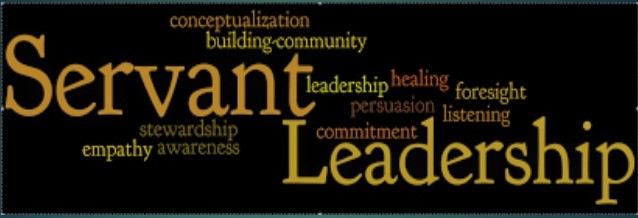
The story lines are unavoidable. Communities facing housing shortages, increasing rents and lack of affordable housing report the growing presence of people experiencing homelessness. It is no longer necessary to go into the deep recesses of the night, in the wrong neighborhood or under the freeway bridge to find unhoused people. People who are unhoused walk among the greater community, carts in tow, and remind us by their presence alone that they exist. The homelessness issue presents servant leaders with a unique opportunity to respond.
Servant leaders address the institutional concern.
“If a better society is to be built, one that is more just and more loving, one that provides greater creative opportunity for its people, then the most open course is to raise both the capacity to serve and the very performance as servant of existing major institutions by new regenerative forces operating within them.” Non-profit, faith based, and government organizations have, as part of their mission, support and aid to those experiencing homelessness.Servant leaders address the need for institutional change in these institutions. While homelessness is arguably a result of a lack of affordable housing, at its core, the solution is a matter of the heart. The institutions and programs available to rid this societal shortcoming must be motivated to garner the resources to solve the issue. The servant leader finds ways to be flexible around matters of geography and jurisdiction. He focusses on collaboration to address the impact of homelessness on people. Fundamentally, the servant leader cares about the needs of others above his own needs and seeks to provide betterment of the individual, and not deprive the most vulnerable and least privileged in society.
Servant leaders prioritize people.
“The difference manifests itself in the care taken by the servant-first to make sure that other people’s highest priority needs are being served.” Certainly, those who care about people can coexist with those who care about solving the institutional and systemic “problem” of homelessness. The solution to homelessness has a very different feel when the focus is on the “issue” of homelessness versus the person experiencing homelessness. For the servant leader, the individual is not lost in the effort. To the servant leader, the person experiencing homelessness is the person being served, the customer who expects service. The person who seeks to resolve homelessness with the person in mind, will be careful to value the individual in their approach. They will include those experiencing homelessness in discussions and strategies for bettering homeless services. People who value resolving the “issue” of homelessness apart from the person may support objectives to remove the visibility of homelessness without regard for the person removed. The servant leader is always on the side of valuing the individual especially the least privileged in society.
Servant leaders practice patience and empathy.
“The servant always accepts and empathizes, never rejects. The servant as leader always empathizes, always accepts the person but sometimes refuses to accept some of the person’s effort or performance as good enough.” Servant leaders will undoubtedly face those who blame the person experiencing homelessness for their current circumstance. “Why won’t the person work?” People experiencing homelessness are associated with some of the most negative stigmas; lazy, drunkard, drug addict, scam artist, irreparable, etc. The servant leader understands that the time taken to enter homelessness is not quickly reversed. With care, the servant leader reassures those experiencing homelessness while patiently encouraging a change of heart for those offended by the presence of homelessness. They carefully reframe the narrative and correct misperceptions, maintaining the focus on the humanity of those experiencing homelessness. They clarify that homelessness is most often associated with underlying childhood trauma and remind others that homelessness, the need to survive on the street under a dynamically different set of social norms, is by itself traumatic.
Finally- servant leaders seek heart change.
There are few needs more foundational to the human existence than housing. Yet, gaps remain in formulating systems to remove barriers to existing homelessness programs. There is not enough involvement by those affected in finding a solution and few proven solutions. Servant leaders are uniquely positioned to usher in change, given their heart and desire to care for the essential needs of others. Servant leaders seek not only to end homelessness as a societal ill but also desire to inspire the heart change in others that will ultimately ensure the most vulnerable in our community are not further deprived.
Written by, Malcolm A. Hankins
4 replies on “A SERVANT-LEADER’S APPROACH TO HOMELESSNESS”
I need to to thank you for this very good read!! I definitely enjoyed every bit of it. I have got you book-marked to check out new things you post…
Thanks for posting this piece of writing. I’m without doubt frustrated with struggling to search out relevant and brilliant commentary on this subject. Everybody now goes to the very far extremes to either drive home their viewpoint that either: everyone else in the planet is wrong, or two that everyone but them does not in actuality understand the situation. Many thanks for your succinct, applicable insight.
I love reading a post that will make people think. Also, thanks for allowing me to comment!
I got what you mean ,saved to bookmarks, very nice web site.